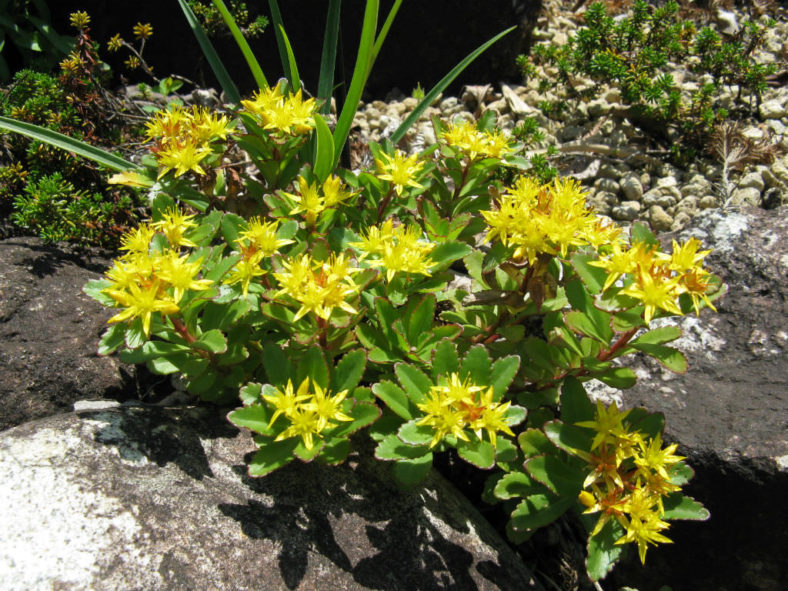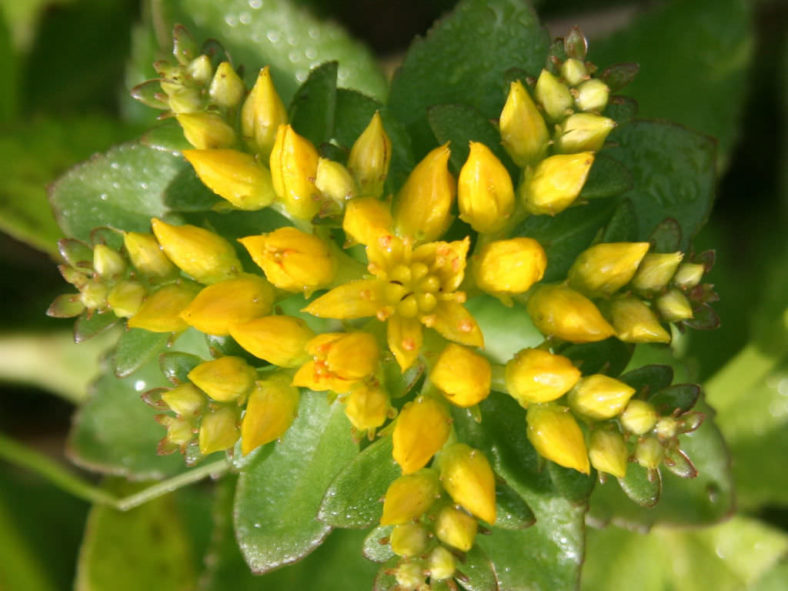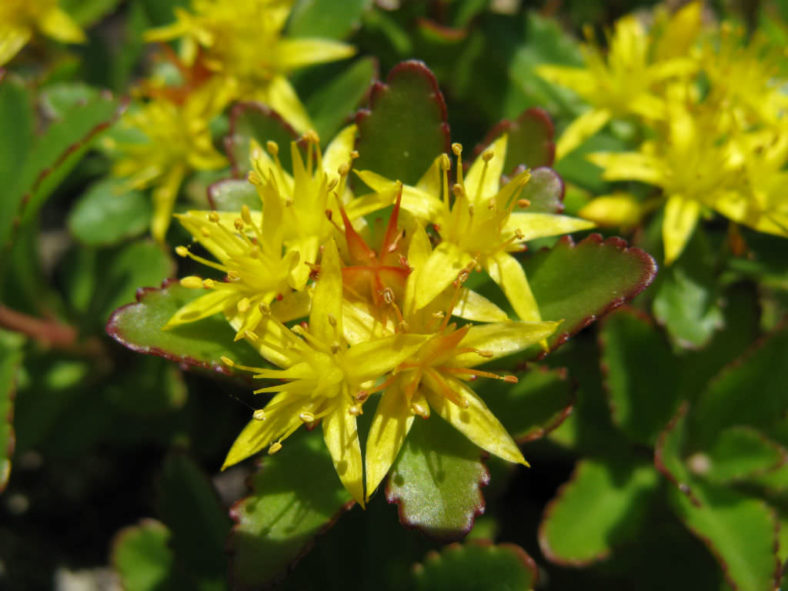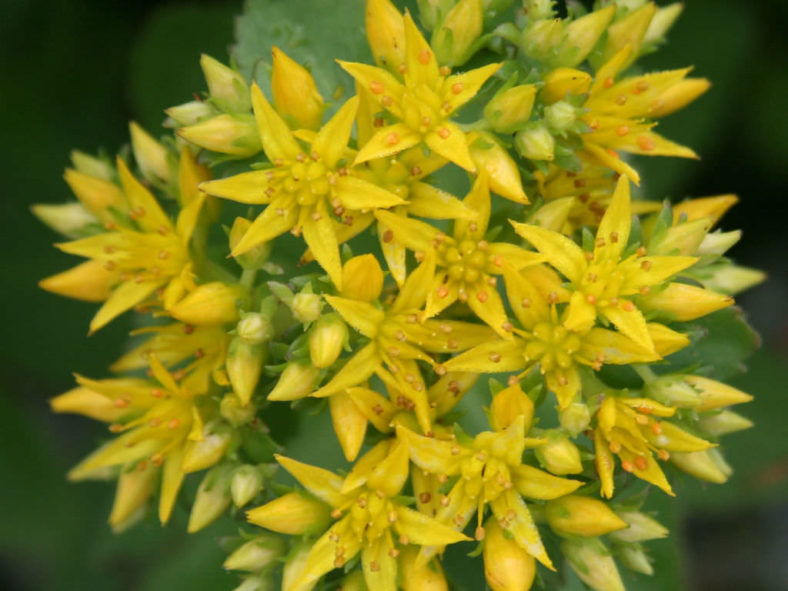Scientific Name
Phedimus aizoon var. floribundus (Nakai) H.Ohba
Accepted Scientific Name
Phedimus aizoon (L.) 't Hart
Common Name(s)
Aizoon Stonecrop, Orpin Aizoon, locally known as Kirin-sou
Synonym(s)
Sedum aizoon var. floribundum, Sedum aizoon f. floribundum
Scientific Classification
Family: Crassulaceae
Subfamily: Sempervivoideae
Tribe: Umbiliceae
Genus: Phedimus
Etymology
The varietal epithet "floribundus (flor-ih-BUN-dus)" means "freely flowering" and refers to the abundant flowers.
Origin
Phedimus aizoon var. floribundus is native to Japan. It is a smaller form of Phedimus aizoon, considered by some authors as a variety.
Description
Phedimus aizoon var. floribundus, formerly known as Sedum aizoon var. floribundum, is a succulent plant with upright, usually unbranched stems that grow from a thick, woody rootstock. The stems can grow up to 20 inches (50 cm) tall. The leaves are green with dark red edges, measuring up to 2.8 inches (7 cm) long and 1 inch (2.5 cm) wide.
The stems are topped in summer with clusters of light yellow star-shaped flowers.

How to Grow and Care for Phedimus aizoon var. floribundus
Light: This light-loving plant tolerates partial shade but prefers full sun and grows best in warmer environments. Plant P. aizoon var. floribundus in an area of your garden that gets at least 6 hours of sunlight a day.
Soil: This succulent thrives in any well-drained soil. Good drainage is critical for preventing root rot or fungal diseases.
Hardiness: P. aizoon var. floribundus tolerates frost and can stay outdoors when the temperature drops below freezing. It can withstand temperatures as low as -30 to 30 °F (-34.4 to -1.1 °C), USDA hardiness zones 4a to 9b.
Watering: The best way to water your P. aizoon var. floribundus is to use the "soak and dry" method. Get the soil completely wet, and then wait until the soil is dry before watering again.
Fertilizing: Feed with low-balanced fertilizer to keep your plant happy and healthy. Use a diluted dose of half the strength recommended on the package.
Repotting: Repot your plant when it outgrows its current pot by moving it out to a larger container to hold the plant better. Spring is the best time to repot P. aizoon var. floribundus. Make sure the soil is dry before you begin the repotting process.
Propagation: Like all members of the genus Phedimus, this succulent can be grown from seeds, division, or stem cuttings. Dividing your P. aizoon var. floribundus is the best propagating method because it is easy and usually very successful. Divide in spring when new shoots are seen. P. aizoon var. floribundus is also easily propagated from cuttings. Sow seeds in spring in well-drained soil in a sunny position.
Learn more at How to Grow and Care for Phedimus.
Toxicity of Phedimus aizoon var. floribundus
P. aizoon var. floribundus can be mildly toxic to humans and animals.
Links
- Back to genus Phedimus
- Succupedia: Browse succulents by Scientific Name, Common Name, Genus, Family, USDA Hardiness Zone, Origin, or cacti by Genus
Photo Gallery
Click on a photo to see a larger version.


